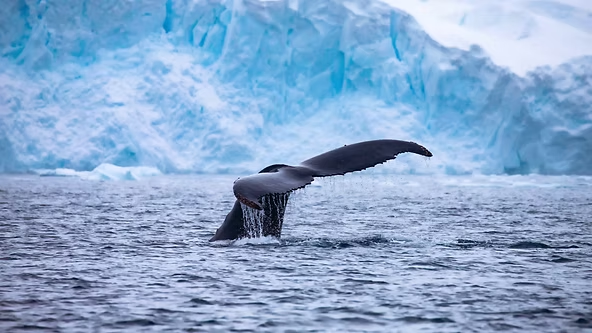The Mighty Role of Baleen Whales in Marine Ecosystems
We often think of whales as the mightiest creatures of the sea, but few realize their critical role in maintaining marine ecosystems. Even marine scientists lacked precise tools to measure basic activities like whale feeding patterns—until recently.
Reevaluating Whale Feeding Habits
Recent research published in the Journal Nature studied the eating patterns of 14 Baleen whale species, including blue whales—the largest sea mammals, measuring up to 100 feet—and humpbacks. Previous studies had underestimated their daily food intake. Using modern tagging equipment, researchers tracked 321 whales across the Pacific, Atlantic, and Southern oceans.
Tagged whales carried cameras and sensory monitors that recorded their lunging behavior, a key method for capturing food. The study revealed that Baleen whales consume up to 16 tonnes of Antarctic krill daily—three times more than previously estimated.
Whales’ Impact on the Marine Ecosystem
With such large daily consumption, whales produce substantial excretion. Interestingly, whales do not defecate in the areas where they feed. Instead, they move to other marine territories, releasing nutrient-rich waste that stabilizes carbon and nitrogen levels in the ocean and provides a growth medium for crucial microorganisms.
These microorganisms—primarily phytoplankton—form the foundation of the marine food chain. Phytoplankton feed the krill that whales consume, creating a self-sustaining nutrient loop. In essence, whales’ feeding and excretion habits enrich the ocean, promote phytoplankton growth, and ensure a steady supply of food for themselves and countless other marine species.
Conclusion
Whales are not only majestic creatures but also vital engineers of the ocean. Their daily activities maintain ecological balance, support marine biodiversity, and help sustain the very food sources they depend on.

